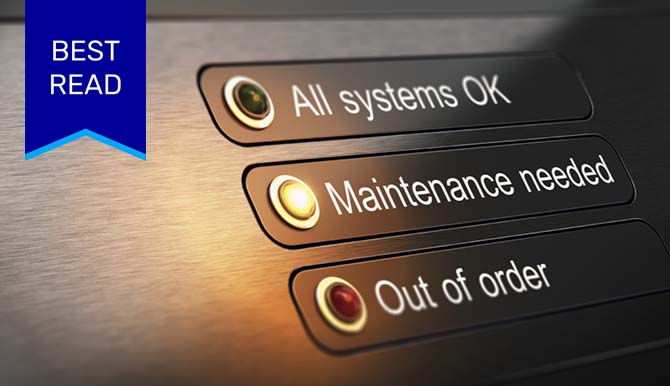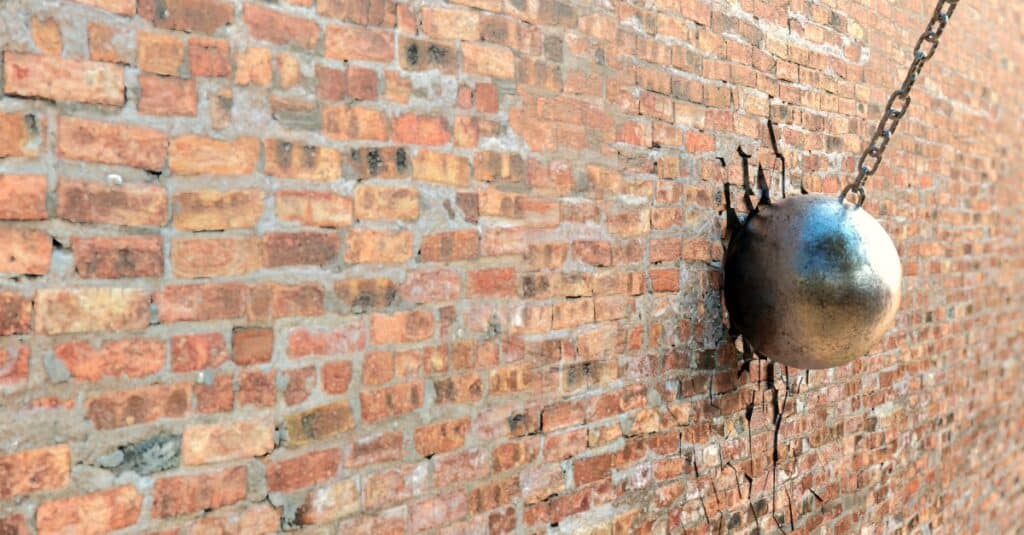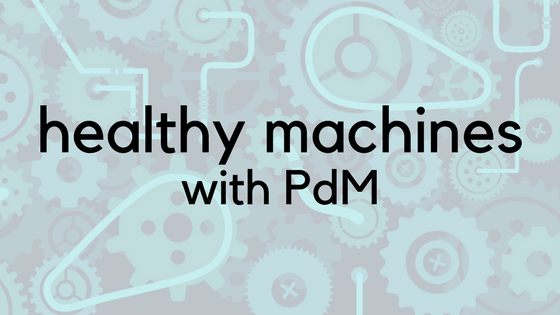
When is the last time you went to the doctor? If you’re like the majority of people, the answer is likely “the last time I was sick.” It’s been a recommendation for decades, though, that we see a doctor annually, regardless of if we have anything wrong with us. It’s called “preventive medicine,” and it’s been shown to help people both medically and financially.
What does this have to do with facilities?
We all deal with machines every day. Some are as simple as clocks while others are complex, like computers. Various industries use hybrid systems made up of both simple and complex machines to function. We often think of complex machines as being the most vital, but that isn’t always the case.
Server rooms at data centers are often small, filled with equipment, and very hot. They make use of basic air or liquid cooling systems to deal with the heat and keep the servers up and running efficiently. They’re simple machines, but vital. A study conducted in 2010 found that with the average cost and length of downtime, a single event cost roughly $504,000. It also found that 44 percent of shutdowns were caused by mechanical failures; 29 percent in power systems, and 15 percent in cooling systems.
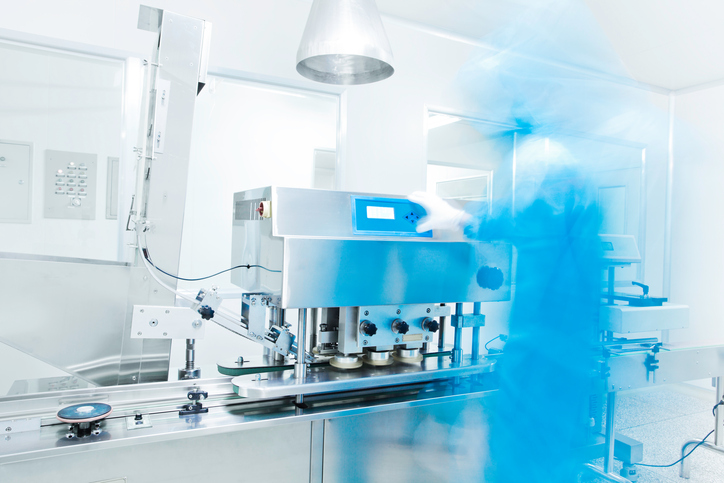
Surgical theaters, food processing facilities, electronic clean rooms, and other industries rely on similar critical-yet-simple infrastructures. Most have put into practice “preventive maintenance,” or the process of scheduling maintenance checks based on time passed or usage endured. As with an annual medical health checkup, the idea is to stop little problems from turning into big ones. It involves the same three basic components: scheduling, diagnostics, and treatment.
Preventive maintenance programs work on a set schedule, where facilities are partially or completely shut down. In some cases, each piece and part is disassembled, inspected, and tested. Parts are then replaced, machinery is reassembled, and operations resume. The parts themselves generally have a replacement date suggested by the manufacturer that many companies choose to adhere to. In general, this type of program is a straightforward and useful method for preventing large problems and unplanned interruptions.
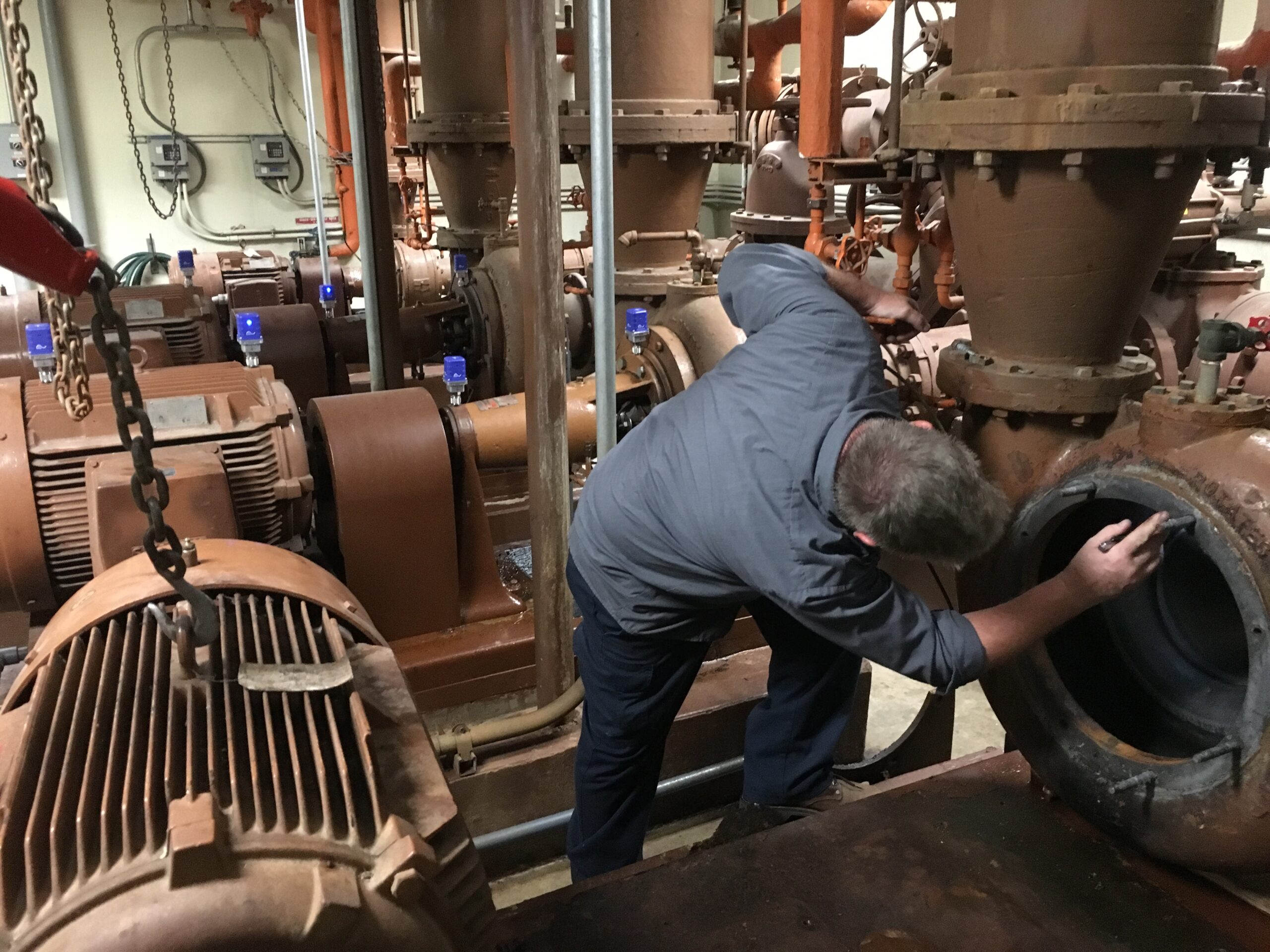
There are, however, two main gaps with the preventive maintenance model. The first is costs. A shutdown, whether partial or total, means lost production time and revenue. Manufacturer replacement schedules can also fail to take significant variables into account, such as actual usage endured. It would be like giving a fifty-year old a heart bypass just because he or she might have a heart attack in the next ten to fifteen years.
The second limitation is machine reliability. Because of the variables involved (operating environment, running time, quality of manufacturing or installation, etc.), there is often potential for downtime to occur due to malfunction between inspections. Each of the forty-one facilities in the above-mentioned study was practicing proper preventive techniques. Yet each suffered failures.
To fill in the gaps, many facilities are turning to predictive maintenance (PdM) to supplement their preventive programs. PdM is a method that has been employed for several decades. It has seen much refinement in recent years, however, aided by the development of new technologies and more sensitive monitoring equipment. Sensors are now able to continuously monitor industrial equipment, listen for changes in machine behavior, send data to the cloud for processing, and return machine diagnostics back to the facilities for maintenance suggestions. By establishing a more accurate baseline, the monitoring equipment is able to determine with unmatched precision exactly when maintenance will be required, and what specifically will need repair or replacing.

The benefits of such a fundamental change can’t be ignored. The ability to keep facilities running with no need for even partial shutdowns in order to conduct mass inspections maintains profits and efficiency. Less frequent part replacement means less spending and storage of spare parts, and fewer incidences of installation errors. It also increases the reliability and longevity of the equipment itself.
And just as physicians are responsible for helping us maintain our physical health, so too are facility and maintenance managers responsible for keeping their machines functioning at ideal capacity. You have the option of waiting until your machines are down to fix them, meanwhile paying for preventive maintenance nonetheless. Or you can save yourself time, money, pain, and heartache with predictive maintenance instead.
—
For more details on how Augury can help, book a demo or contact us to hear more.



